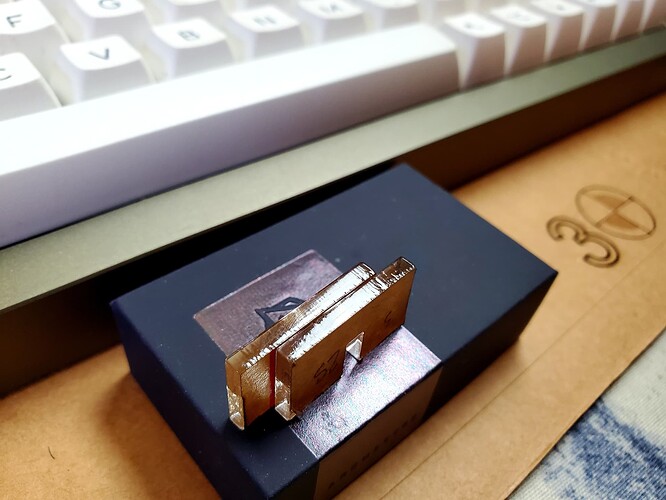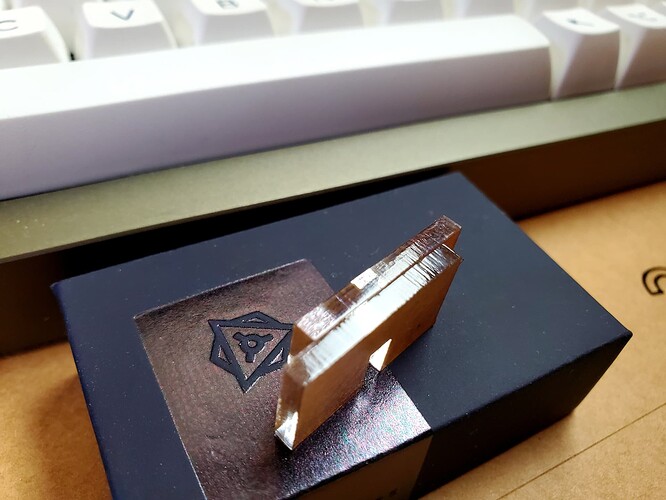Thanks a bunch, the keyboard niche is a wacky one.
For sure, I’d love to see some of the tests you run. I found some settings that seem to give much better results. For 3mm Cast acrylic I went with 3mm/25% and then another at 5mm/35%. Results seem comparable but definitely a little more polish with 3mm/25%.
You brought up airflow and ambient temperature so I also set my inline fan to about half the speed it was running before. The machine is in the garage and it’s pretty cold so I’m thinking that had a lot to do with my 3mm acrylic cuts cooling down before the gases/heat trailing the laser had a chance to polish the edges.
For the time being I think these results are acceptable. Will cut some actual parts and see where I am from there with fitment. I haven’t really had issues with sharp edges from acrylic cuts. That said, I’ve only had my laser for a few weeks and haven’t done much in the way of actual production. The laser service I outsourced my parts from didn’t seem to have issues either. My parts typically were delivered still in their cut sheets of acrylic with an extra layer of masking on the back to sort of hold everything in.
I hadn’t thought about heat polishing with a burner. Something to try for sure. I often use Delrin for certain parts of my boards and I’d love to be able to polish all of those scratches out. POMs polished surface scratches like crazy so often times I sand it down to get a matte finish instead.
Here’s where I am so far: First image is 3mm/25% and Second image is 5mm/35% both using air assist with my inline fan at half the speed I was using before. Used these same parameters on some extruded acrylic as well and seemed to have more striation than we see with these cast samples.

